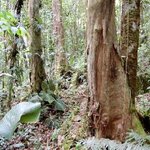Environment

A very unusual exchange is about to take place over the Atlantic. The UK is sending some 700 kilograms of highly enriched uranium to be disposed of in the US, the largest amount that has ever been moved out of the country. In return, the US is sending other kinds of enriched uranium to Europe to help diagnose people with cancer.
The vast majority of the UK’s waste comes from its fleet of nuclear power stations. Most of it is stored at the Sellafield site in north-west England. But the material being sent to the US is a particularly high (weapons usable) grade of enriched uranium that you…

Despite the hype, there’s still no bee-pocalypse. Two weeks ago, the U.S.
Department Agriculture released its latest count of
commercial honeybee hives, and although the figure dipped 2.9 percent from the 20-year
record-high set in 2014, the overall count of 2.7 million hives in 2015 remains
strong. You wouldn’t know it from the news coverage.
One Michigan television station recently led with the
headline: “Numbers of managed honey bee colonies plummeting.” It explained:
“According to the USDA the total number of managed honey bee colonies has
decreased by 2.5 million since the 1940s.”[1]…

I've been interested in the edible forest garden idea for over twenty years and have planted and designed several myself in Ireland in that time, and visited several others. But they have never lived up to my expectations and were largely unproductive, despite sourcing as many perennial vegetables and other interesting edible plants as I could. Here I review the claims made for them and what evidence there is to support the idea- and conclude that, as Permaculture founder Bill Mollison said in the first place, in temperate regions you are far better growing your fruit trees and vegetables…

Book review: The New Wild: Why invasive species will be nature's salvation by Fred Pearce
Icon Books 2015
In
1910 New Zealand's great botanist Leonard Cochayne described the
dramatic change in plant communities which had occurred since the first
visit of Captain Cook to the country in 1769 (1). Some 560 new species
from Europe, Africa and elsewhere had by become established by then,
with half of them common throughout the country from the coasts to the
highest mountains:
At first thought, the idea of 560
different sorts of plants- some of them the most aggressive weeds in…

Jonathan Lundgren, a US Department of Agriculture currently on leave facing misconduct charges, says the government is suppressing information about the dangers of pesticides, which he believes are endangering the health of bees around the world.
He’s a whistleblower, say advocacy journalists and pesticide and GMO activists. A sympathetic narrative, recently highlighted in a Washington Post magazine feature by Steve Volk, portrays him as a ‘revolutionary’ determined to roll back the excesses of modern farming.
U.S. agriculture, says Lundgren, is in crisis. A lack of diversity in farming and…

Anthocyanins, pigments that give plants their red, blue, or purple hues, are not typically produced in citrus fruits grown under tropical or subtropical conditions.
Now, scientists have genetically engineered a lime that contains anthocyanins, which they say has several potential benefits. Manjul Dutt, Daniel Stanton, and Jude Grosser, from the Citrus Research and Education Center at the University of Florida, say that the discovery will allow the cultivation of new citrus fruits in the major subtropical citrus belt and/or the production of ornamental plants, depending on the cultivar.
The…

If you live in one of four major U.S. cities chances are you're letting the benefits of a ubiquitous natural resource go right down the drain instead of using it to cut down your water bill.
Toilet flushing is the biggest use of water in households in the United States and the United Kingdom, accounting for nearly one-third of potable water use. But there is no reason that clean, treated, municipal water needs to be used to flush a toilet -- rainwater could do the job just as well.
A new paper indicates it rains enough in Philadelphia, New York, Seattle and Chicago that if homeowners had a…

A new report describes how researchers analyzed a major 2011 Texas wildfire using a scientifically based post-fire data collection approach, a system they believe will lead to improved defensive measures and strategies for significantly reducing structural damage and property loss.
In February 2011, three fires raged through suburban areas outside of Amarillo, Texas, at the wildland urban interface (WUI), the area where residential communities and undeveloped wildlands meet. The fires destroyed 70 homes, burned more than 10,000 hectares (25,000 acres) of land and caused nearly $6 million in…

The types of beneficial fungi that associate with tree roots can alter the fate of a patch of tropical forest, boosting plant diversity or, conversely, giving one tree species a distinct advantage over many others, finds a study in Ecology Letters which sought to explain a baffling phenomenon in some tropical forests: Small patches of "monodominant forest," where one species makes up more than 60 percent of the trees, form islands of low diversity in the otherwise highly diverse tropical forest growing all around them.
The new study focused on mountain forests in Panama that harbor hundreds…

Soybean farmers in the United States can choose from a “candy store” of hundreds of varieties of soybean seed—high-yielding seed with proven performance traits for every region and latitude.
Not so in Africa. For a variety of political reasons, soybean farmers either only have access to a few seed varieties with an unimpressive yield potential, or a few high-yielding varieties for which no performance data exists for their latitude and altitude.
That may change, thanks to a new cultural fortitude which resists being controlled by Europe and a new coordinated soybean variety evaluation…